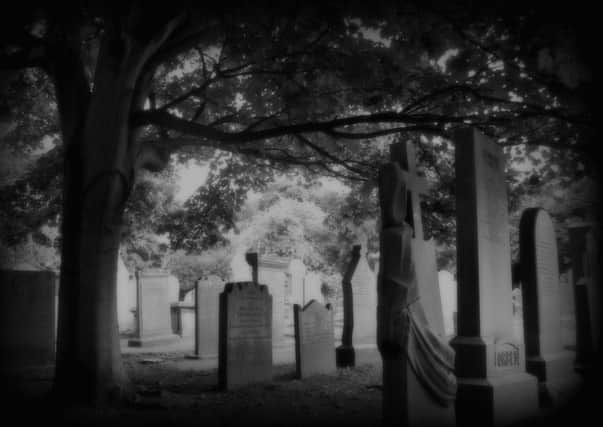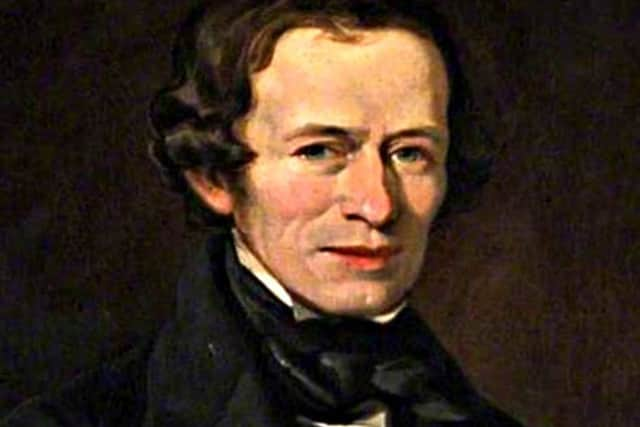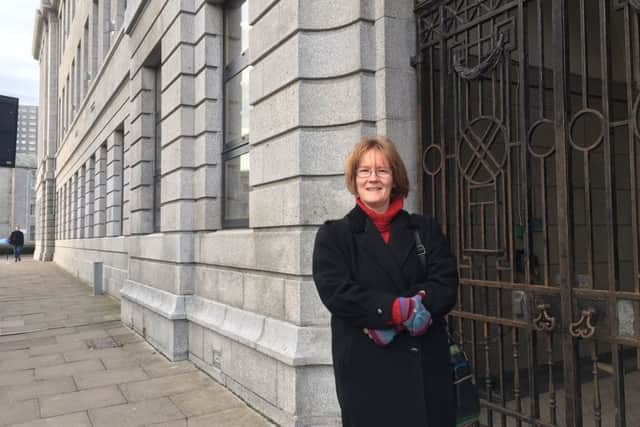The Aberdeen body snatchers that sparked a riot of 20,000


The city long had its own squad of anatomy students and teachers plundering North East graves for medical research.
But disgust at the Burke and Hare crimes grew to such an extent that, in December 1831, it sparked a riot in Aberdeen city centre with an anatomical theatre burned to the ground while a group of 20,000 Aberdonians cheered on.


Advertisement
Hide AdAdvertisement
Hide AdThe city’s most famed anatomist, Dr Andrew Moir, the first anatomy lecturer at the city’s King’s College who was well regarded around Scotland, was chased down the street by the crowd with several medical students also pursued by the baying crowd.
Such was the fervour of the unrest, soldiers were mobilised - but told to keep a safe distance.
The fire came after several stories around the activities of student members of Aberdeen Medical Society, formed in 1789, who sought cadavers for their studies.


The members were paid 10 shillings and sixpence to watch over graveyards, including Spital and St Machar, while their teachers searched for corpses, according to a paper by E Humphries for the Royal College of Physicians of Edinburgh.
Advertisement
Hide AdAdvertisement
Hide AdThe story of a medical student who acquired the body of a drowned boy to make a skeleton became well known in the city.
“He was however discovered by his landlord’s wife because of the smell of the cadaver as he ‘boiled it in the broth pot’” an account said.
The body of another boy was accidentally dropped in icy water at the Bridge of Dee by a group of students as they were disturbed on their mission to take the corpse to university.


The ringleader ‘Long Ned’ was charged with body snatching, leading to an outbreak of public disorder in the city.
Advertisement
Hide AdAdvertisement
Hide AdWhen two boys walking their dog behind the anatomical theatre in now St Andrew Street came across human bones, it was the torch paper for a night of destruction liked the city had never seen before.
An account of the Extraordinary Demolition of an Anatomical Theatre in Aberdeen was published in a broadside, or newssheet, on December 19 1831.
It runs under the headline Burking Shop Destroyed in a nod to William Burke, who was hanged in January 1829 for committing 16 murders in Edinburgh for the supply of bodies for anatomical research.


His accomplice William Hare was released after confessing and turning King’s Evidence against his friend.
Advertisement
Hide AdAdvertisement
Hide AdIn Aberdeen, once the bones were discovered, two men went into the theatre, found Dr Moir and assaulted him before the lecturer could escape.
Moir was then followed into his nearby house before jumping from a window, running down George Street and hiding under a stone in St Nicholas Kirk graveyard.
Meanwhile, a crowd of around 100 stormed the anatomical theatre
“They found tree dead bodies lying on boards. Cloaks, instruments, all the paraphernalia of the place, instantly disappeared, part being destroyed, and part carried off,” the report said.
Advertisement
Hide AdAdvertisement
Hide AdAs police ordered the removal of the bodies from the theatre, chants rang out of “burn the house....down with the burking shop!”
An unsuccessful attempt was made to light the building but “shavings, fir and tar-barrel staves” were quickly gathered. The blaze quickly then quickly took affect.
A crowd used planks as a battering ram to pummel the rear wall of the building and, such was their force, that the whole structure fell with a “tremendous crash”.
The report added: “The blaze of the fire was now extraordinary, from the quantity of the supplementary fuel put on. The crowd, however, did not appear to rest satisfied until the place was fazed.”
Advertisement
Hide AdAdvertisement
Hide AdThe threat was so big from the burgeoning riot that troops from the 79th regiment at the nearby barracks were summoned but advised to stay back as far as Schoolhill.
The crowd continued to batter the building. The entire structure eventually caved to the delight of 20,000 people with “loud and continued” cheers marking its destruction.
Dr Fiona-Jane Brown, a folklorist and historian based in Aberdeen, said the disgust over the Burke and Hare case helped to fuel the riot.
“It was so close to the Burke and Hare case that basically everybody, everywhere all over Scotland thought that all the anatomy surgeons were murderers.
Advertisement
Hide AdAdvertisement
Hide Ad“Dr Moir had to run for his life. Basically he got no sympathy at all.”
Dr Moir, who was widely respected by his profession, briefly left Aberdeen after the riot but returned the following year.
It was also in 1832 that the Anatomy Act was passed which allowed unclaimed bodies to be dissected and used in anatomy theatres.
The legal move effectively brought to an end the dark nights of the body snatchers.
A new short film on Dr Andrew Moir and his body snatching activities, called The Burkin Hoose, will be released in the New Year by Aberdeen-based Crow House Films.
